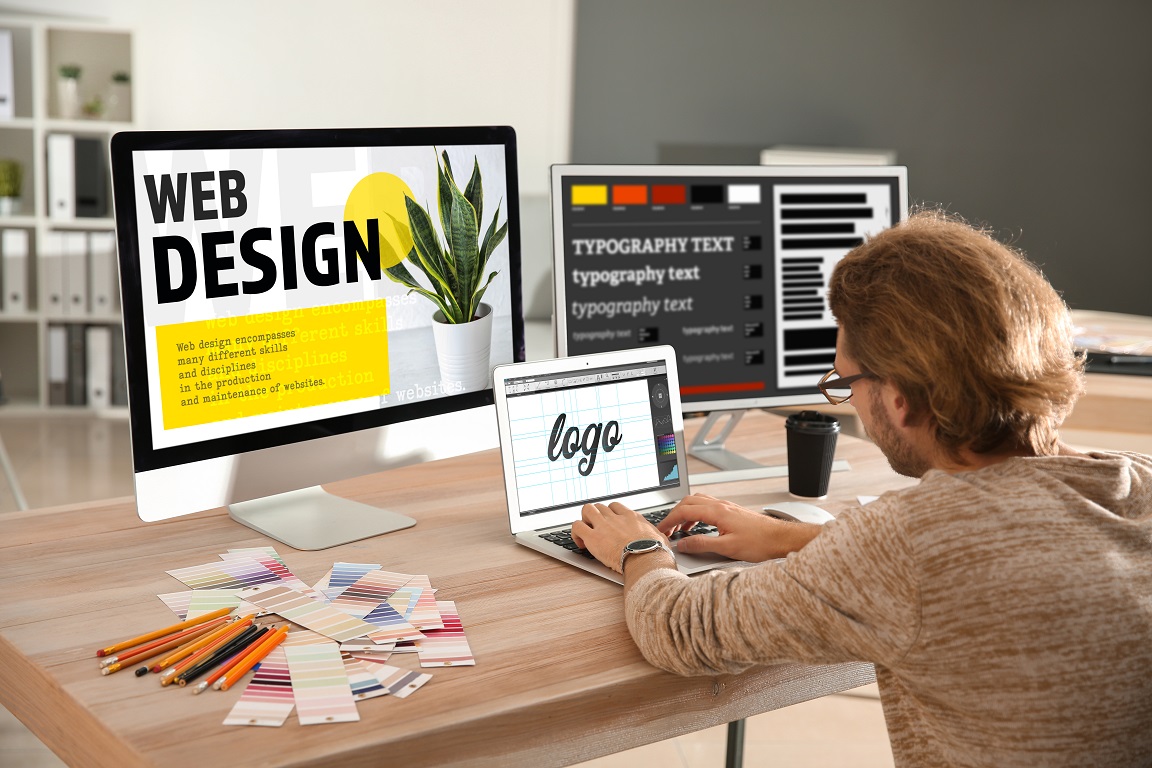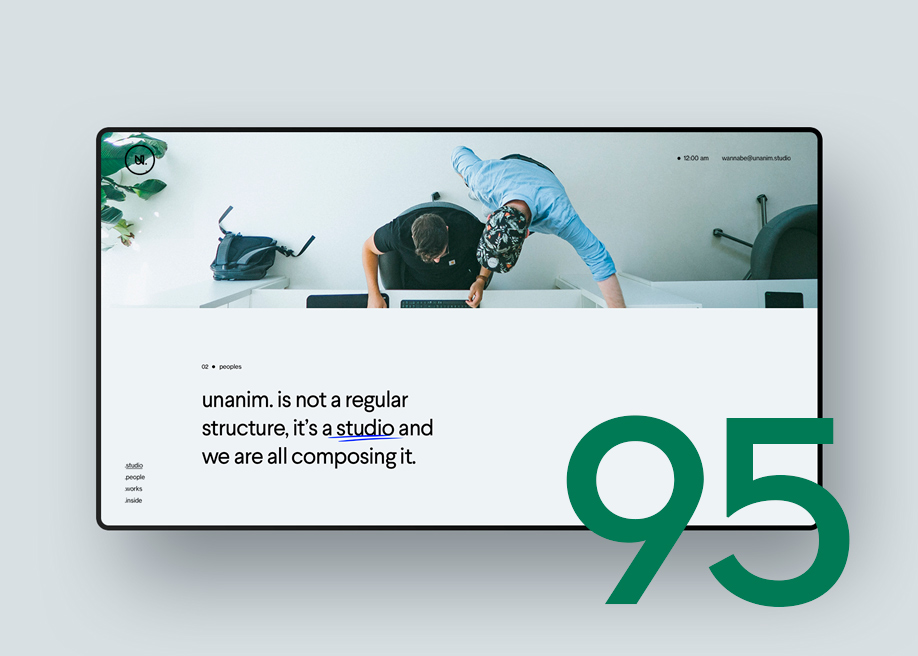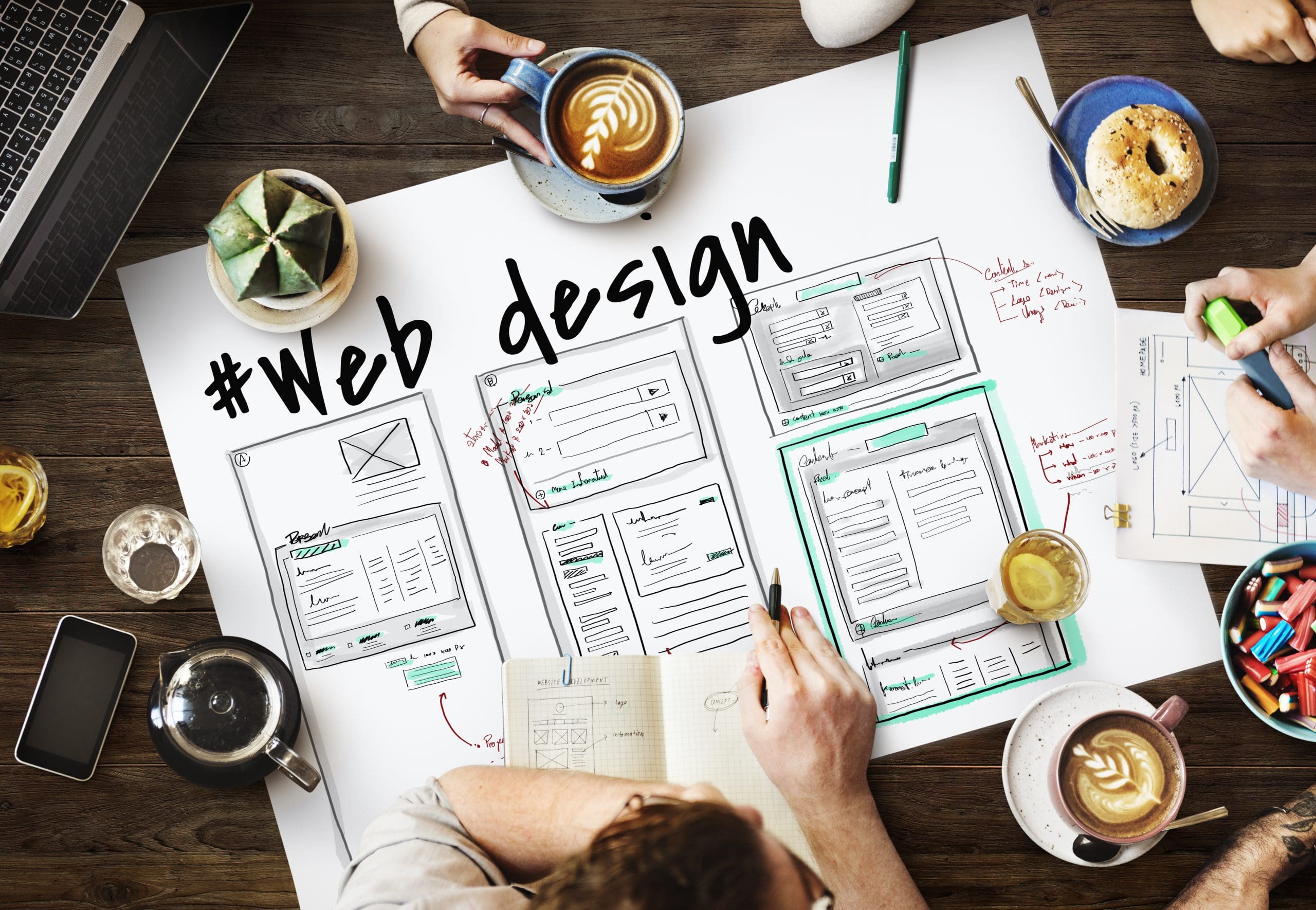Web Design London Ontario for E-Commerce and Businesses
Wiki Article
Understanding the Trick Elements That Make up Efficient Internet Layout Approaches
When it involves web layout, comprehending the crucial elements can make all the difference in individual involvement and complete satisfaction. You need to ponder elements like user-friendly navigation and responsive design to create a smooth experience. That's just the beginning. Each part plays an essential function in leading users through your web content and influencing their behavior. Curious about what truly drives these methods? Let's explore deeper right into these important elements.The Relevance of Customer Experience (UX) in Website Design
Customer experience (UX) is the foundation of efficient website design, shaping exactly how visitors interact with your site. When you focus on UX, you create an area where users really feel comfortable, involved, and valued. A well-designed UX guarantees that your target market can conveniently browse your web content, find information promptly, and enjoy their total experience.You should consider your customers' choices and requirements, as this understanding directly affects their satisfaction. By focusing on components like tons times, mobile responsiveness, and ease of access, you enhance their experience considerably.Moreover, a favorable UX cultivates depend on and encourages repeat visits, which can cause higher conversion prices. Remember, customers won't hesitate to leave your website for a competitor if they experience stress or complication. Ultimately, investing in UX isn't practically aesthetic appeals; it's regarding creating a user-centric style that maintains site visitors returning for more.Crafting Instinctive Navigating for Seamless Browsing
When designing a web site, crafting instinctive navigation is crucial for guaranteeing site visitors can find what they require without irritation. Begin by arranging your content rationally; group associated web pages with each other to aid customers anticipate where to locate information. Usage clear, succinct tags for navigating web links, preventing lingo that could perplex your audience.Consider carrying out an ordered framework with a main menu and dropdowns for subcategories, making it very easy to drill down into details subjects. Include a search bar to empower customers to locate content straight, especially on bigger sites.Don' t forget mobile users; establish your navigation stays available on smaller sized screens. Maintain it regular and simple across all pages to strengthen familiarity. By concentrating on these aspects, you'll create a smooth surfing experience that keeps site visitors engaged and encourages them to explore even more of what you need to use.Receptive Layout: Adapting to Various Instruments
As the selection of tools individuals use to access the internet proceeds to grow, guaranteeing your site is receptive has actually never ever been extra critical. A receptive design suggests your website adapts effortlessly to different screen dimensions, from smart devices to desktops, giving a remarkable watching experience. This versatility not just improves user complete satisfaction however likewise improves your website's performance in internet search engine rankings.To produce a receptive style, usage versatile grids and formats that immediately get used to the screen's dimensions. Carry out CSS media questions to customize styles based on gadget attributes. Prioritize vital web content, guaranteeing it's easily accessible on smaller screens without overwhelming customers.The Role of Visual Hierarchy in Effective Layouts
Aesthetic power structure is vital for directing your target market's interest where it matters most. By properly making use of prime focus, color, typography, and contrast, you can create a layout that communicates your message clearly. Allow's explore just how these components work with each other to enhance your layout.Significance of Focal Details
Prime focus are vital in web style, assisting individuals' focus to one of the most vital components on a web page. By strategically placing these focal factors, you develop a clear visual hierarchy that boosts individual experience. Think of what you desire your visitors to observe initially-- whether it's a call-to-action button, an essential photo, or significant information.Using placement, size, and contrast, you can accentuate these prime focus, making them stand out. Bear in mind, the a lot more popular the focal point, the most likely users are to engage with it. A well-designed layout not just catches interest however also leads users via your material seamlessly, guaranteeing they take in the details that matters most. Prioritizing focal points is vital for reliable interaction on your site.Shade and Contrast Use
Reliable use of shade and comparison can significantly affect exactly how customers perceive your internet site's material. By selecting a shade combination that straightens with your brand name, you create an emotional link with site visitors. High contrast between message and history boosts readability, ensuring your message stands out. Usage contrasting shades to highlight essential components, like call-to-action buttons, guiding customers' interest where it matters most.Additionally, balance is essential; way too much comparison can be frustrating, while as well little may make your content unnoticeable. Applying an aesthetic pecking order with color helps customers browse your site with ease. You want them to easily compare headings, subheadings, and body message, which enhances their general experience. Eventually, effective color and comparison usage maintains users involved and motivates them to discover even more.
Typography's Impact on Layout
While it's very easy to neglect, typography plays an essential duty in forming your site's layout and total individual experience. It develops a visual pecking order that guides visitors through your content. By selecting the best typefaces, dimensions, and styles, you can highlight essential details and create a seamless circulation. Using bigger headings assists users rapidly identify areas, while smaller body message offers thorough understandings without frustrating them. Consistent typography not just boosts readability yet also strengthens brand identity. Remember to stabilize ornamental fonts with clarity to preserve professionalism and trust. Eventually, reliable typography guarantees your message reverberates, making your web site more appealing and straightforward. Prioritizing this element can significantly boost your style technique and impact.Utilizing Engaging Material to Engage Site Visitors
Just how can you keep your site visitors involved and coming back for more? The answer lies in compelling web content. Start by understanding your audience and what interests them. Develop helpful short articles, enthralling stories, or enjoyable video clips that resonate with their demands. Make use of a conversational tone to make your material relatable; it must seem like a pleasant conversation instead than a lecture.Incorporate visuals like photos, infographics, and video clips to separate text and maintain points dynamic. Don't neglect to invite interaction-- ask concerns, motivate comments, or consist of surveys to trigger discussions.Also, prioritize clarity and brevity. See to it your major points radiate through without unneeded lingo or fluff. Bear in mind, top quality over amount issues; it's much better to have less, high-impact pieces than a multitude of average ones. Inevitably, when your content's engaging, site visitors will not just remain yet additionally share it with others.The Influence of Color Psychology on User Interaction
When you pick shades for your website, consider exactly how they can influence individual feelings and understandings. Colors can enhance your brand identity while also ensuring ease of access with comparison. Understanding these aspects can considerably increase customer interaction and involvement.Shade Meanings and Emotions
Comprehending shade psychology is crucial for developing an interesting web layout, as the colors you choose can influence and stimulate particular feelings user communications. Different shades can activate numerous sensations; for instance, blue often communicates trust and calmness, while red can evoke enjoyment or urgency. When you integrate these shades thoughtfully, you direct your individuals towards desired actions. Yellow can influence positive outlook and happiness, making it efficient for calls to action, while eco-friendly promotes leisure and a link to nature. By aligning your shade scheme with the feelings you intend to generate, you enhance customer experience. Consider your target market and the message you want to communicate, ensuring your shade selections reverberate and create a lasting effect.Brand Name Identification Through Colors

Color Comparison and Access
While picking a color scheme is essential, assuring appropriate contrast is essential for access. You desire your site to be visually enticing, yet it needs to additionally accommodate all customers, consisting of those with aesthetic problems. High contrast between message and history improves readability, making it easier for everyone to involve with your content.Think concerning color psychology, also. Different colors evoke various feelings and responses. By understanding exactly how colors effect user communication, you can direct users towards desired activities. As an example, using cozy shades can develop necessity, while amazing colors could instill calmness. Always check your shade mixes to verify they satisfy ease of access requirements, aiding you develop an inclusive experience that resonates with all visitors.Optimizing Tons Rate for Enhanced Performance
Considering that customers anticipate websites to pack swiftly, maximizing load speed is important for enhancing efficiency and user complete satisfaction. A slow-loading site can discourage site visitors and drive them away, so you require to act. Beginning by compressing images and using modern layouts like WebP. This can substantially lower documents sizes without giving up quality.Next, lessen HTTP requests by incorporating CSS and JavaScript files. Fewer requests indicate quicker load times (website design london Ontario). Executing lazy filling for videos and images guarantees that web content tons only when users scroll down, improving first tons speed.Additionally, take advantage of internet browser caching to keep regularly accessed resources, permitting repeat visitors to appreciate much faster packing times. Ultimately, select a reputable hosting company. Their performance directly impacts your website's rateRegularly Asked Questions
Just How Can I Measure the Efficiency of My Website Design Technique?
To measure your web layout method's efficiency, track user interaction metrics like bounce prices, conversion prices, and ordinary session period. Usage tools like Google Analytics to collect understandings and change your approach based upon the more info data.What Prevail Blunders to Stay Clear Of in Website Design?
In internet design, avoid chaotic layouts, inconsistent typefaces, and slow packing times (website design london Ontario). Do not disregard mobile responsiveness or overlook individual testing. Focus on availability and warranty clear navigation to improve user experience and keep site visitors engagedHow Usually Should I Update My Internet Site Design?
You should update your site layout every 1 to 2 years, or whenever significant adjustments happen in your brand name or industry. Routine updates keep your website fresh, enhance individual experience, and enhance functionality.
What Tools Can Help Analyze Customer Habits on My Site?
To assess user actions on your site, you can utilize devices like Google Analytics, Hotjar, or Crazy Egg. They'll give insights right into customer interactions, helping you make notified choices for boosting your website's efficiency.
How Do I Select the Right Typeface for My Website?
Choosing the appropriate typeface for your website entails thinking about readability, style, and placement with your brand name. Experiment with different fonts, confirm they're clear on numerous gadgets, and keep consistency across your pages for a natural look. Integrate a search bar to empower individuals to find content directly, specifically on larger sites.Don' t forget regarding mobile customers; ascertain your navigating continues to be accessible on smaller displays. Efficient use of color and comparison can considerably influence just how users view your internet site's content (website design london Ontario). Recognizing color psychology is necessary for developing an engaging web design, as the shades you choose can evoke particular emotions and influence user interactions. By understanding exactly how colors effect individual interaction, you can direct customers towards desired activities. Because customers anticipate websites to fill rapidly, enhancing lots speed is crucial for improving efficiency and customer complete satisfactionReport this wiki page